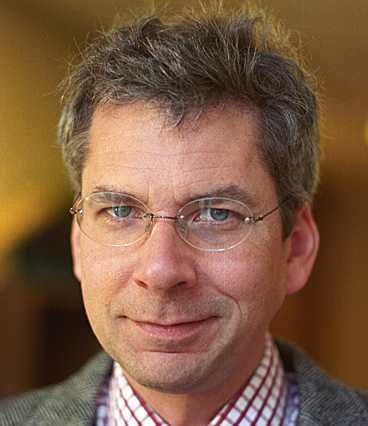Peter Fisher, a professor of physics and head of the particle and nuclear experimental physics division, has been named the next head of the Department of Physics. His five-year term will begin Nov. 15.
Fisher succeeds Edmund Bertschinger, who left his position as department head in July to begin his new role as the Institute Community and Equity Officer. Thomas Greytak, the Lester Wolfe Professor Emeritus of Physics, has been serving as interim department head since Bertschinger stepped down.
“Peter has demonstrated great dedication to the research and teaching missions of the Department of Physics, both through his own work and in his mentoring of students and young faculty members,” says Marc Kastner, dean of the School of Science and the Donner Professor of Science. “He has also demonstrated a commitment to the Institute more broadly, for example, in his service on the committee to search for MIT’s president and the Kendall Square task force. I look forward to working with him in his new role as department head.”
Throughout his career, Fisher has been interested in the experimental detection of dark matter and inventing new ways of detecting subatomic particles. He has also been involved in new means of electrical power generation and transmission.
“MIT colleagues have been a continuous source of ideas and inspiration for me for 20 years,” Fisher says. “I’ve worked with people from all over the department and Institute on all kinds of different things. The superb quality and organization of the physics department has made this possible and I look forward to working hard to make the department continue to flourish.”
Before coming to MIT in 1994, Fisher earned his bachelor’s degree in engineering physics from the University of California at Berkeley, followed by a PhD in physics from the California Institute of Technology in 1988. He was on the faculty of Johns Hopkins University from 1989 to 1994.
At MIT, Fisher also holds appointments in the Laboratory for Nuclear Science, the Kavli Institute for Astrophysics and Space Research, and the Institute for Soldier Nanotechnologies. He is a fellow of the American Physical Society.
Fisher succeeds Edmund Bertschinger, who left his position as department head in July to begin his new role as the Institute Community and Equity Officer. Thomas Greytak, the Lester Wolfe Professor Emeritus of Physics, has been serving as interim department head since Bertschinger stepped down.
“Peter has demonstrated great dedication to the research and teaching missions of the Department of Physics, both through his own work and in his mentoring of students and young faculty members,” says Marc Kastner, dean of the School of Science and the Donner Professor of Science. “He has also demonstrated a commitment to the Institute more broadly, for example, in his service on the committee to search for MIT’s president and the Kendall Square task force. I look forward to working with him in his new role as department head.”
Throughout his career, Fisher has been interested in the experimental detection of dark matter and inventing new ways of detecting subatomic particles. He has also been involved in new means of electrical power generation and transmission.
“MIT colleagues have been a continuous source of ideas and inspiration for me for 20 years,” Fisher says. “I’ve worked with people from all over the department and Institute on all kinds of different things. The superb quality and organization of the physics department has made this possible and I look forward to working hard to make the department continue to flourish.”
Before coming to MIT in 1994, Fisher earned his bachelor’s degree in engineering physics from the University of California at Berkeley, followed by a PhD in physics from the California Institute of Technology in 1988. He was on the faculty of Johns Hopkins University from 1989 to 1994.
At MIT, Fisher also holds appointments in the Laboratory for Nuclear Science, the Kavli Institute for Astrophysics and Space Research, and the Institute for Soldier Nanotechnologies. He is a fellow of the American Physical Society.






